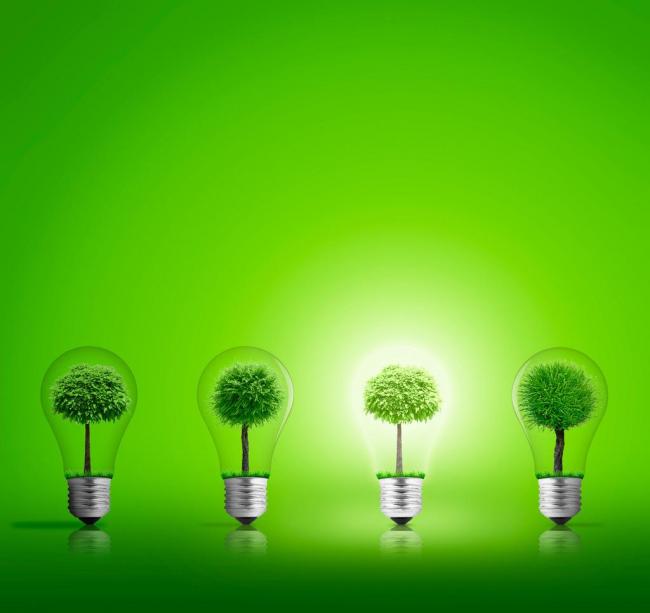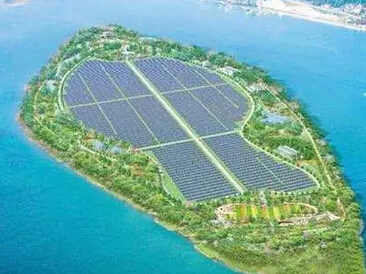In the first half of the year, although China's new energy industry, represented by photovoltaics and wind power, has achieved rapid development, its development content and trends have presented different situations. The photovoltaic industry is affected by the slowdown in new construction and the subsidy policy. It faces serious challenges of reducing power generation costs, optimizing development scale and improving operational quality. The wind power industry is accelerating the pace of development of offshore wind power and distributed wind power. Under the situation of a decline in installed capacity in two years, the situation has been reversed.
According to data released by the China Electricity Council, the newly built power generation capacity of the national infrastructure in the first half of this year was 52.11 million kilowatts, including 2.49 million kilowatts of hydropower, 15.15 million kilowatts of thermal power, 1.13 million kilowatts of nuclear power, 1.73 million kilowatts of wind power, and 25.81 million kilowatts of solar power. Solar power generation has invested 2.19 million kilowatts more than the same period of the previous year. The newly-generated power generation capacity of solar power generation accounts for nearly half of the newly-built power generation capacity of the nation's infrastructure.
In recent years, China's new energy industry, represented by photovoltaics and wind power, has achieved rapid development, and its installed capacity has ranked first in the world. The pursuit of high quality development has become a new goal of the industry. Since the first half of this year, with the introduction of a series of national guidelines and guidelines for guiding the development of the industry, we have put forward higher requirements for new energy development in terms of strict control of scale, upgrading of standards, and encouragement of local consumption. The new energy industry will From high-speed growth to high-quality development.
PV enters strategic adjustment period

At the same time as the adjustment of the photovoltaic industry, the wind power industry has ushered in good news. Recently, the National Energy Administration released data from January to June in the national power industry. As of the end of June, the cumulative installed capacity of wind power in the country was 179.96 million kilowatts, and the cumulative average utilization hours was 1,143 hours, an increase of 159 hours compared with the same period of last year. Kilowatts, an increase of 1.52 million kilowatts year on year, an increase of 25.29% year-on-year, the growth rate reached a three-year high. This means that the continuous decline in China's wind power installed capacity in the past two years has been reversed.
At the same time, the National Energy Administration data show that in the first quarter of this year, the national abandonment of wind and abandonment rate achieved a "double drop." The industry believes that the wind power industry may be reversing in the context of accelerating the development of offshore wind power and distributed wind power this year and continuing to promote the issue of renewable energy consumption.
After years of steady development, China's offshore wind power has basically had large-scale development conditions, both in terms of resources that can be developed and technical policies. The reporter learned that Fujian Province plans to install more than 2 million kilowatts of offshore wind power by the end of 2020. Guangdong Province has planned 23 offshore wind farm sites in the province with a total installed capacity of 66.85 million kilowatts. Jiangsu plans to build a total of 3.5 million kilowatts of offshore wind power projects by 2020. At present, these regions are actively improving supporting policies for the development of offshore wind power.
At the same time, decentralized wind power is also considered to be the next focus of the development of the wind power industry. Qin Haiyan, secretary-general of the Wind Energy Professional Committee of the China Renewable Energy Society, said that during the 13th Five-Year Plan period, the shift of China's wind power development focus to the southern part of the Middle East has become an inevitable trend. However, the terrain of these areas is complex, mostly mountainous and hilly, and there are fewer and fewer areas for centralized development. Large-scale development models are becoming less and less useful, and future decentralized development will become one of the main modes.
"For the moment, to truly develop distributed wind power, we must also solve the practical problems of complicated approval process, unclear grid access requirements, difficult financing, and more difficult land acquisition," Qin Haiyan added.
















 RCCN WeChat QrCode
RCCN WeChat QrCode Mobile WebSite
Mobile WebSite






![[New energy] - electric motor principle](/upload/image/20170519/20170519090819_74516.jpg)
